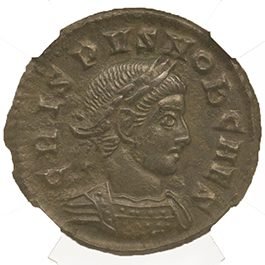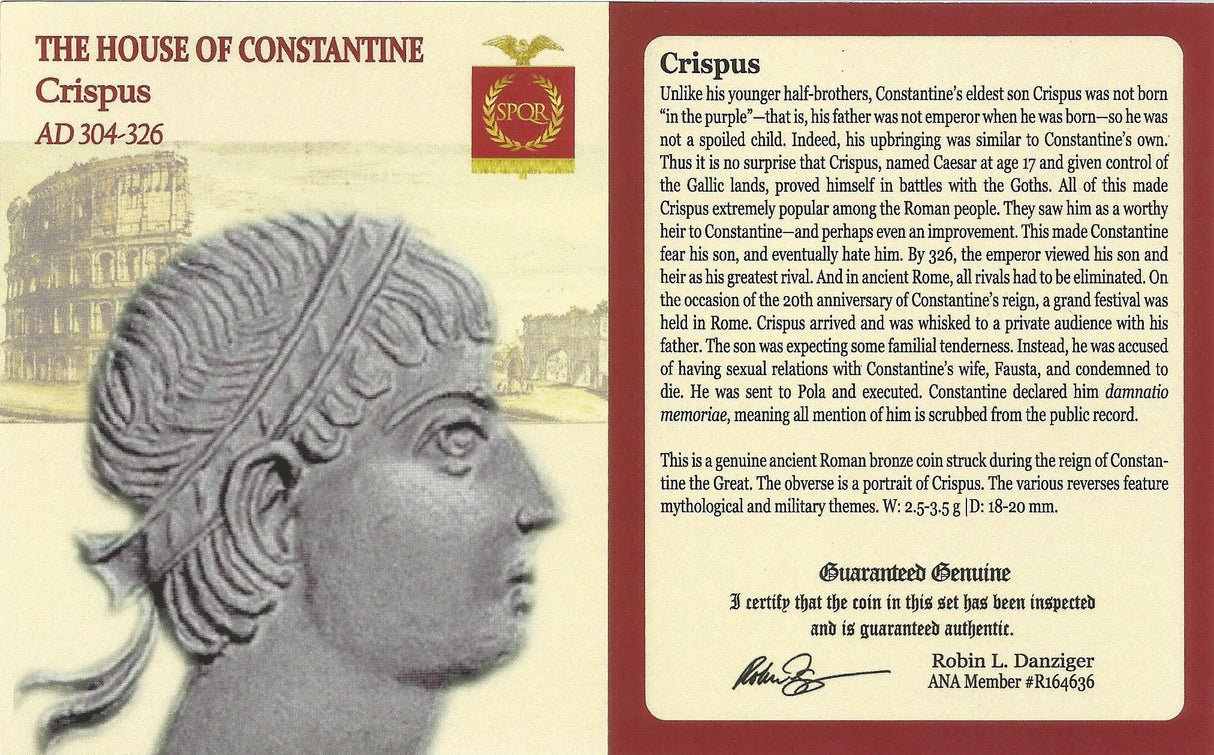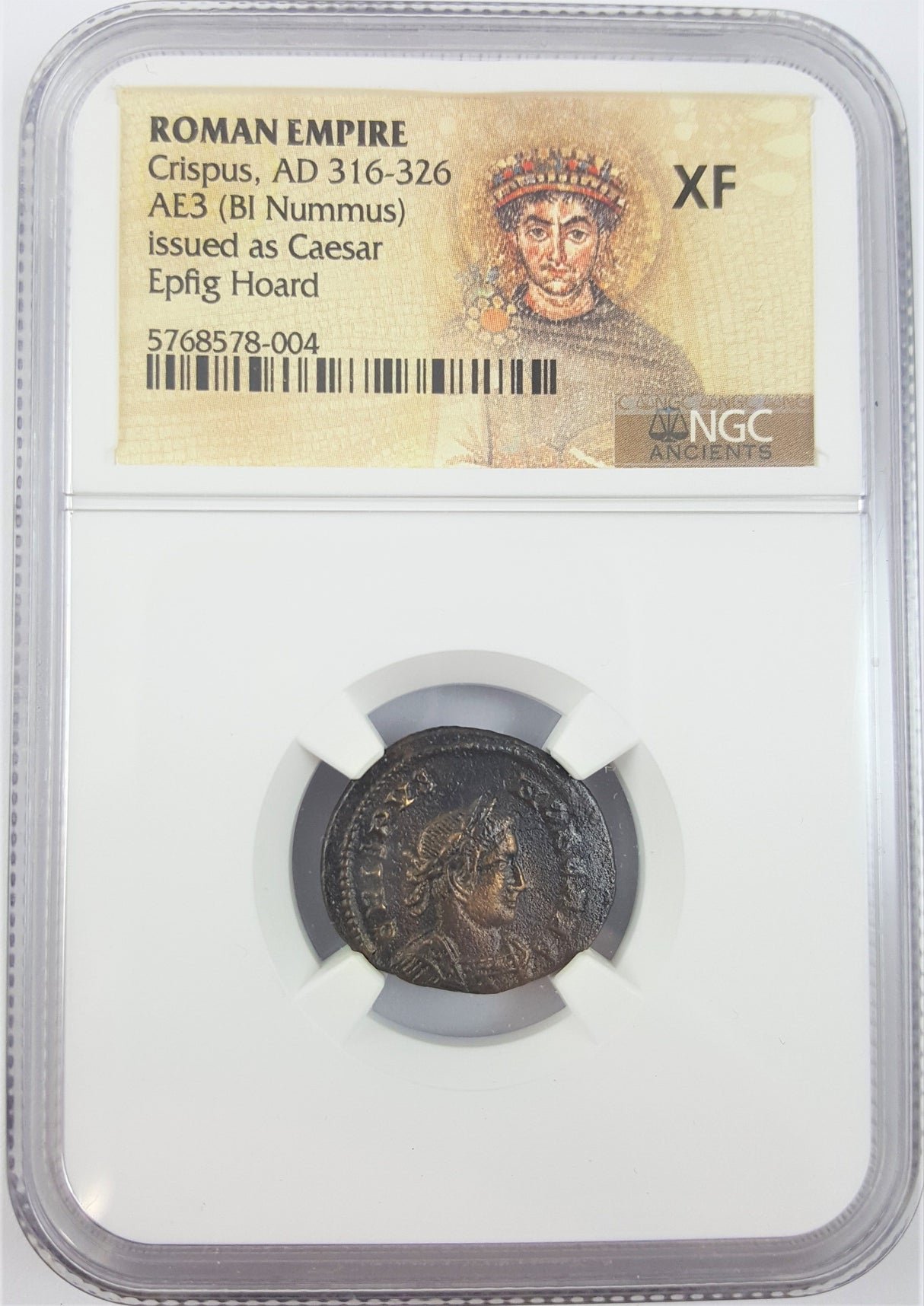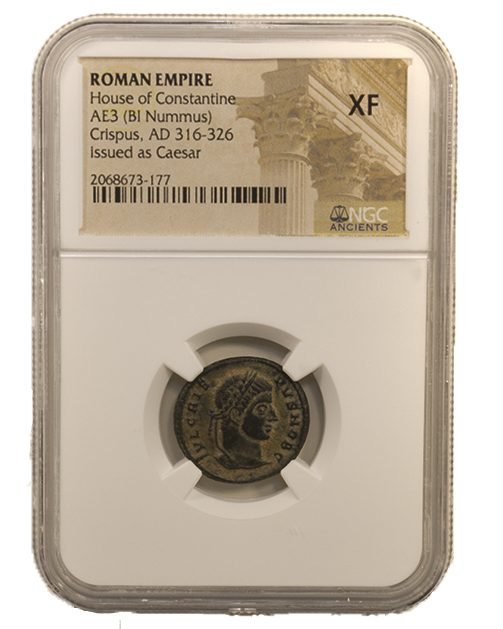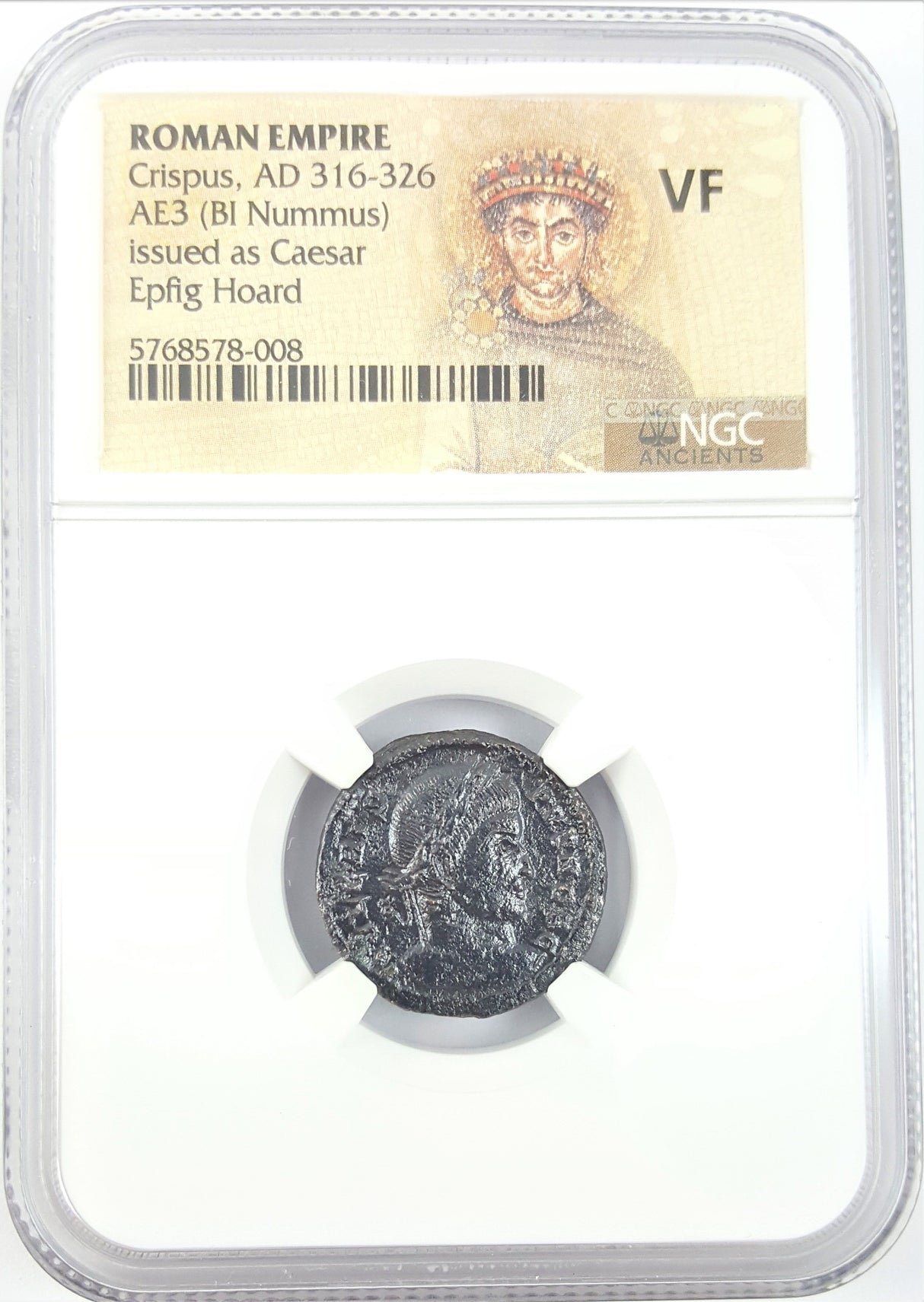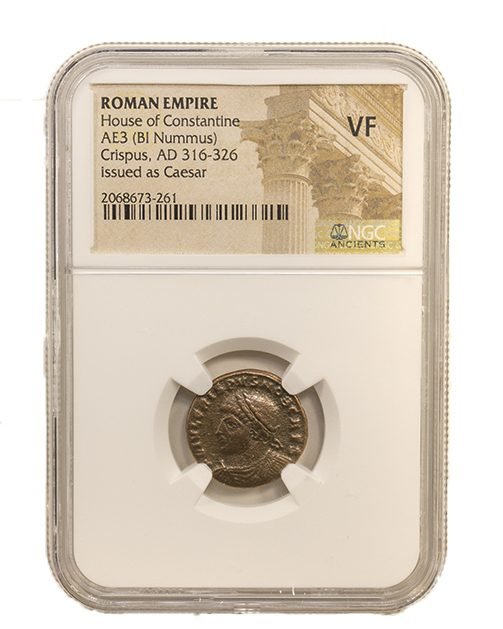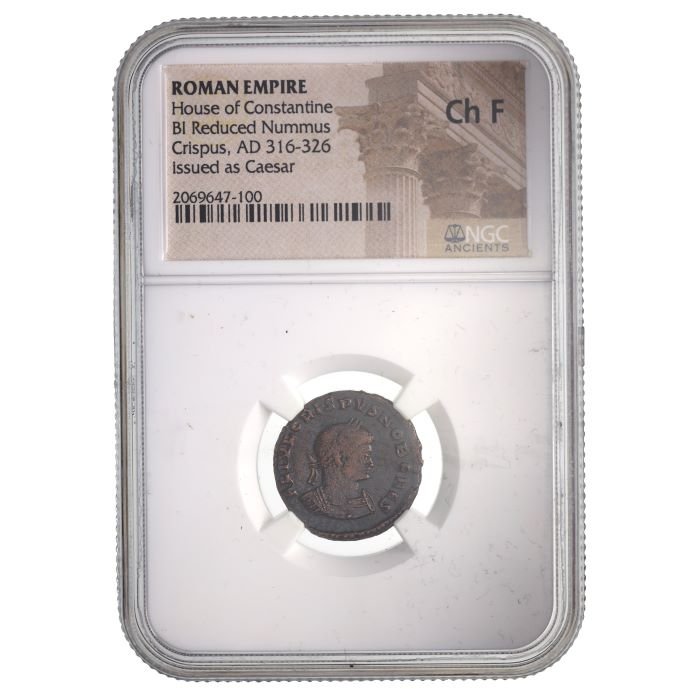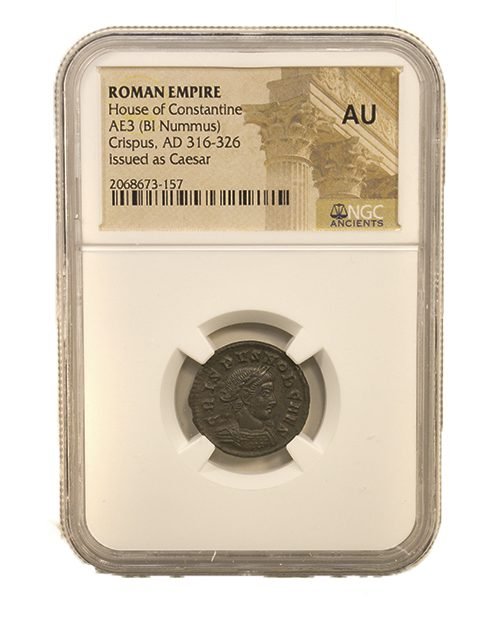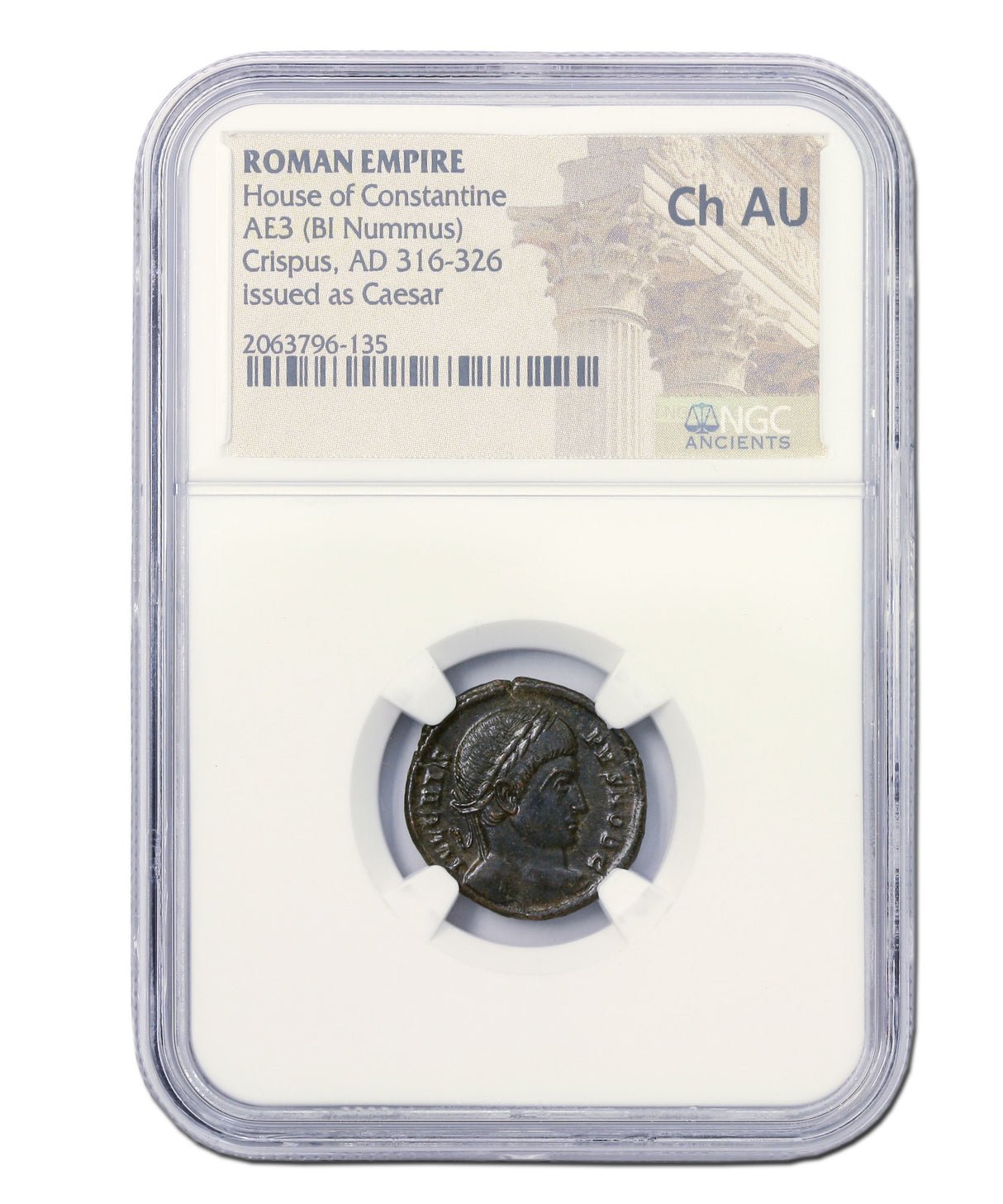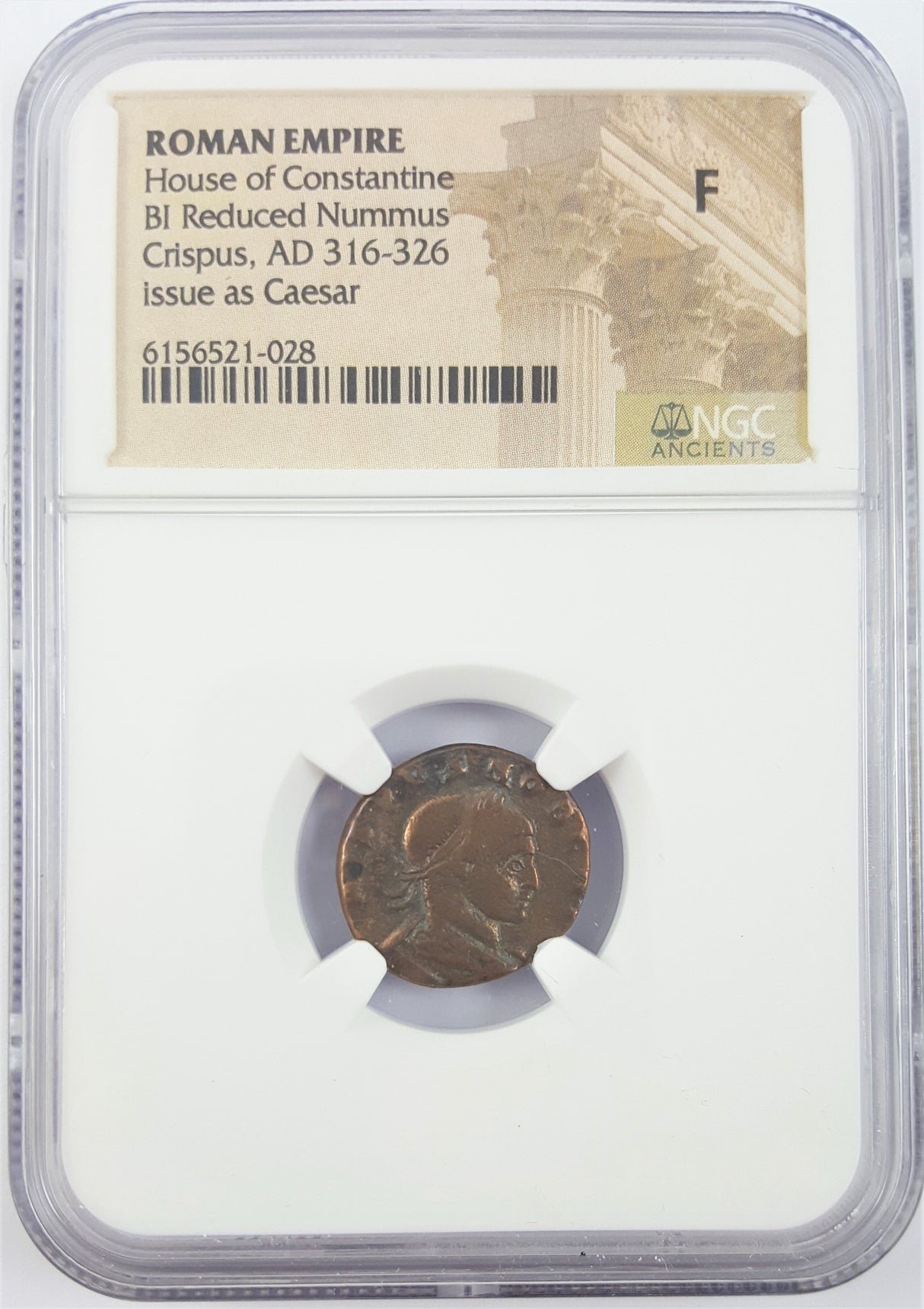Constantius II Gladiator Reverse NGC Slab - Fallen Horseman
Coins in images are examples only.
When we think of ancient Rome, we think first of the gladiators. These professional fighters delighted frenzied crowds in the Colosseum, doing battle with wild animals, with condemned criminals, and with one another, sometimes fighting to the death. The archetype of the gladiator has persisted for more than two thousand years, to the present day.
Coins in images are examples only.
When we think of ancient Rome, we think first of the gladiators. These professional fighters delighted frenzied crowds in the Colosseum, doing battle with wild animals, with condemned criminals, and with one another, sometimes fighting to the death. The archetype of the gladiator has persisted for more than two thousand years, to the present day.
Coins in images are examples only.
When we think of ancient Rome, we think first of the gladiators. These professional fighters delighted frenzied crowds in the Colosseum, doing battle with wild animals, with condemned criminals, and with one another, sometimes fighting to the death. The archetype of the gladiator has persisted for more than two thousand years, to the present day.






















